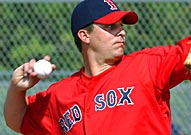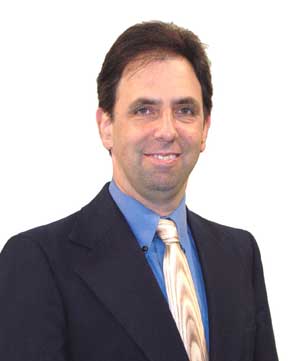MIT Alum Helps the Red Sox’ Keith Foulke by Matt McGann '00
Every Sunday ESPN nationally televises one baseball game, and last night they showed the final game of the three-game set between the archrivals Boston Red Sox and New York Yankees. The Red Sox won the rubber game of the series 7-2, thanks to a strong pitching performance from David Wells, who pitched 8 1/3 solid innings. After a Gary Sheffield single in the ninth inning, Red Sox manager replaced Wells with relief pitcher Keith Foulke, who has been struggling greatly this year. The announcers said that Foulke had flown to Birmingham, Alabama, last week to see Dr. Glenn Fleisig. That was a name that caught my ear.
Every Sunday ESPN nationally televises one baseball game, and last night they showed the final game of the three-game set between the archrivals Boston Red Sox and New York Yankees. The Red Sox won the rubber game of the series 7-2, thanks to a strong pitching performance from David Wells, who pitched 8 1/3 solid innings. After a Gary Sheffield single in the ninth inning, Red Sox manager replaced Wells with relief pitcher Keith Foulke, who has been struggling greatly this year. The announcers said that Foulke had flown to Birmingham, Alabama, last week to see Dr. Glenn Fleisig. That was a name that caught my ear.



At left, Red Sox relief pitcher Keith Foulke; at right, biomechanics researcher and MIT alum Glenn Fleisig.
Glenn Fleisig, along with his wife Clara, serves as our head alumni interviewer in the Birmingham area. Dr. Fleisig is the Smith + Nephew Chair of Research at the American Sports Medicine Institute, and graduated from MIT with a degree in Mechanical Engineering in 1984. Clara is a Medical Doctor with a Biology degree, MIT Class of 1985.
For more information, I went to ESPN’s Peter Gammons, who wrote:
Keith Foulke took last Monday’s off-day to go see Dr. Glen Fleisig and the staff at ASMI in Birmingham for an evaluation of his delivery. Because ASMI is in conjunction with Dr. James Andrews, there were reports that Foulke was having shoulder problems. Foulke would not discuss it. “Every player has the right to privacy,” said one Sox official. “Most of our pitchers go there at some point each year.” Why not? Fleisig might be one of the best practicioners of pitching biomechanics in the world.
Wanting to know more, I turned to my friend Google. I found:
- A nice video story about Fleisig and pitching biomechanics from “This Week in Baseball,” entitled The A’s pitchers uses cutting edge biomechanics.
- A two-part interview by Baseball Prospectus with Fleisig. Part 1 Part 2
- A CNN story: Technology Takes the Mound
The Baseball Prospectus interview asked Fleisig how he got his start:
Like many people out there, I had dreams of being a major league player as a kid. After a while it became apparent that I was stronger in the classroom than on the baseball field. I went to MIT, majored in mechanical engineering, and figured I’d devote my life to being a mechanical engineer, building cars and playing softball on the weekend with friends. This was 1983, and at that time MIT had a biomechanics lab in the mechanical engineering department. I had to do my senior engineering project, and my friends were working on fluid dynamics, heat transfer, things like that. So I walk into the biomechanics lab, and I see someone working on breaking down a golf swing. I didn’t know you could use these principles to apply to sports and people’s movements playing sports. So for my senior paper I worked on the mechanics of the golf swing.
I told the professor in charge of the lab that I wanted to get a job in this field; he laughed and said there weren’t any. An intern from MIT had gone out to the Olympic training center in Colorado to do some biomechanical work, so I decided to do the same thing. When I got there, I was just some college kid who’d walked off campus, right into the center of media attention for the ’84 Olympics. We were testing rowers, archers–USA Today, CBS, newspaper people would show up every day–it was quite exciting obviously. From there, I approached Dr. Chuck Dillman–he was the director of the biomechanics lab and my first mentor–and said: ‘I like the idea of looking at sports through biomechanics, but my particular interest is baseball. What can I do to do this for a living?’ He said I’d have to meet this up-and-coming young doctor named James Andrews. The Olympic committee and Andrews had put together a joint effort, a course called “Injuries in Baseball,” and Dr. Dillman suggested there might be some potential there.
And how’s Foulke doing? In three appearances since his consultation with Fleisig, he has not allowed a baserunner. Keep it up!